Developer: Konami Publisher: Konami Release: 08/27/91 Genre: Shooter
The end of a given console’s life is usually the most interesting in terms of releases. With years of experience behind them developers tend to craft truly amazing games not thought possible on old hardware. One need only look at Donkey Kong Country or God of War 2 on the PS2 as examples. The NES had its fair share of technical marvels such as Ninja Gaiden 3 and Little Samson but they pale in comparison to some of the titles left in Japan. Konami’s Crisis Force, next to Tetrastar and Recca, is quite possibly one of the most technically accomplished games for the system. It is also one of its overall best shooters.
Asuka and Maya are living boring lives in Japan when their shared dream unexpectedly comes true. In the past seven demons ravaged mankind and sunk Atlantis. Now they have arisen once again and plan to do the same to Tokyo. The pair take to the sky in their Aura Wing fighters to save the world from this threat.
For most NES owners growing up Gradius and Life Force were their gateway into the shooter genre. It was rare to meet anyone who either didn’t play either title or owned the game. With that in mind its odd that Konami refused to bring their other NES shooters to the US. Parodius, Gradius II and especially this little gem would have made great additions to the system’s library. Although in this case its late release is the culprit. That is a damn shame as Crisis Force is an amazing game that pushes the system to the limit.
One cannot talk about Crisis Force without mentioning its graphics and it lives up to the hype. The game is pulling off 16-bit level effects on this ancient hardware with ease. There are multiple layers of parallax scrolling along the lines of M.U.S.H.A and it looks amazing. In fact it also pulls off a similar effect where the ground gives way to a scrolling canyon that features enemies that scale in from the distant ground. It doesn’t rely on just pure technical wizardry as the art direction is incredibly varied as well. The streets of Tokyo give way to flaming volcanoes before the game takes on a heavy Egyptian theme. As disjointed as it may seem it is consistent. The bosses are some of the NES’s largest and are animated extremely well. The game almost has everything.
It should come as no surprise that the game suffers from heavy slowdown. In most cases it runs normally and might even be too fast. But certain levels such as stage four and five run in near permanent slow motion. As strange as it may sound the slowdown is necessary to manage some of the more brutal boss battles. In coop sprite flickering becomes prominent as well. The game had to suffer somewhere considering the system’s limits but luckily it doesn’t affect it too badly.
The weapon system seems simple at first but has some depth. You aren’t collecting new weapons as you progress but instead powering up the ship’s existing cannons. The Aura Wing has three configurations: Front offense, which concentrates fire in a straight line, Side Offense, which covers your left and right flank, and Rear Offense, which is self-explanatory. You can switch at any time and they change considerably depending on the red or blue orbs collected. These either power up the default cannon or change it to a wave beam. But wait there’s more. Your smart bomb also changes depending on the mode with wildly different effects. One even performs a short range teleport!
There is one last weapon and it is pretty significant. The special blue gold orbs will transform you into a near invincible weapon of mass destruction for a limited time. The timer ticks down immediately and hits chop off seconds rather than result in death. It’s possible to keep it going by collecting more orbs which are in ready supply. While it sounds overpowering this form’s effectiveness lessens over time. Its fire isn’t focused and you are a large target. By the games second half it isn’t as great outside of its invulnerability.
The game handles death differently thanks to the weapon system. With each power-up your ship can sustain a hit but your weapon will degrade. At its peak you can take 3-4 hits before death. Item drops are a regular occurrence, even during boss fights which makes an already difficult game manageable.
Behind all of the technical wizardry is a game that is thoughtfully designed. This is a faster paced shooter than the majority on the system and demands your utmost attention. Each level is varied in its threats and provides plenty of opportunity to switch modes for maximum effectiveness. With item drops being so frequent the system encourages experimentation. While Crisis Force can be tough at times I found the difficulty only slightly above average. Even though death is a detriment you can quickly get back up to speed. At seven levels the game is a wild ride and I could easily have gone for seven more.
In Closing
Crisis Force is an amazing achievement, both technically and mechanically. It would have been easy for Konami to ape Gradius but instead they have gifted the game with its own unique mechanics. With its fantastic presentation and tight gameplay Crisis Force is a must have in any NES library.
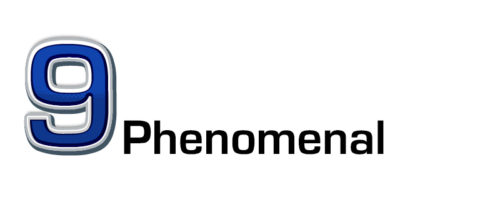

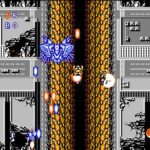
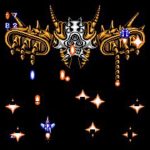
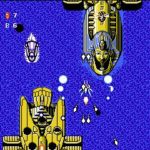
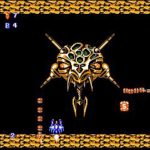
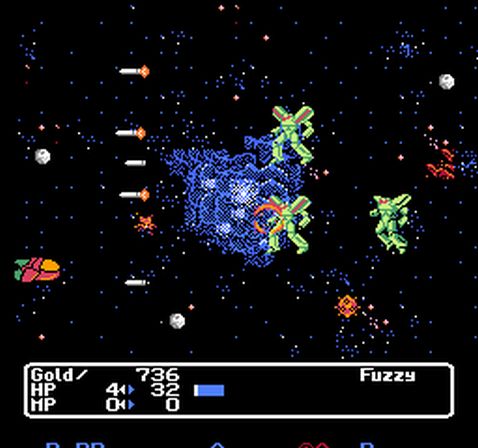
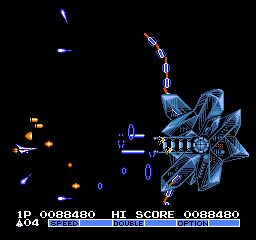
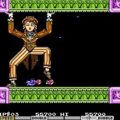
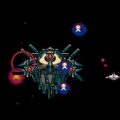
2 thoughts on “Crisis Force”